Tateyama Kurobe's
Development and Tourism


From untrodden area deep in the mountains to major tourism destination
Tateyama is a spiritual mountain, much like Mount Fuji.Directly beneath its main peak, Oyama, runs the Tateyama Kurobe Alpine Route, a single route connecting Toyama and Nagano that fully opened in June 1971. Its construction began in 1952 with the decision to launch a large-scale project to benefit Toyama's industrial economic development. The first step in this project was the planning of a cable car between Tateyama Station and Bijodaira and a mountain road between Bijodaira and Murodo, and construction on the cable car began in December 1952.

Chapter 1Construction of the Tateyama Cable Car
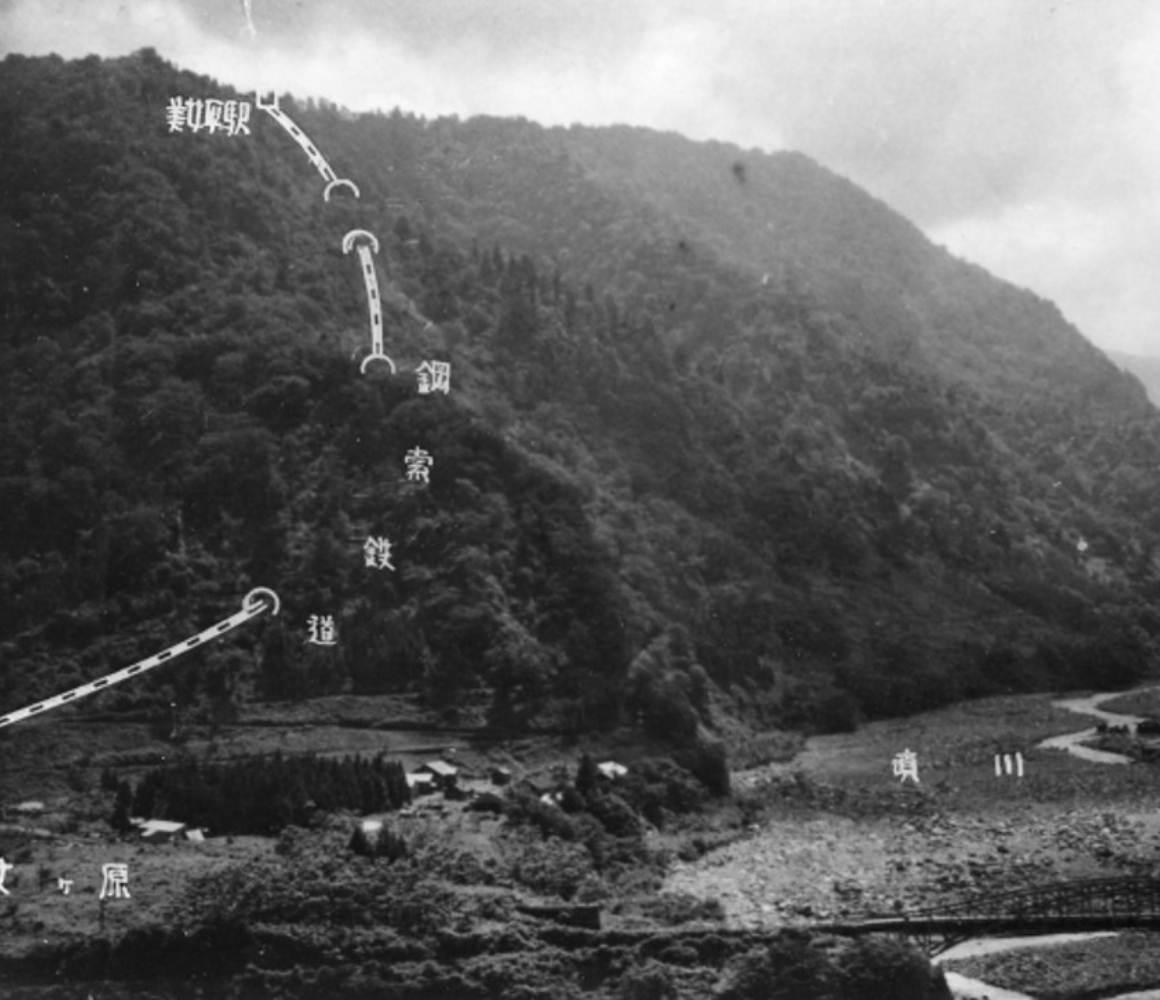
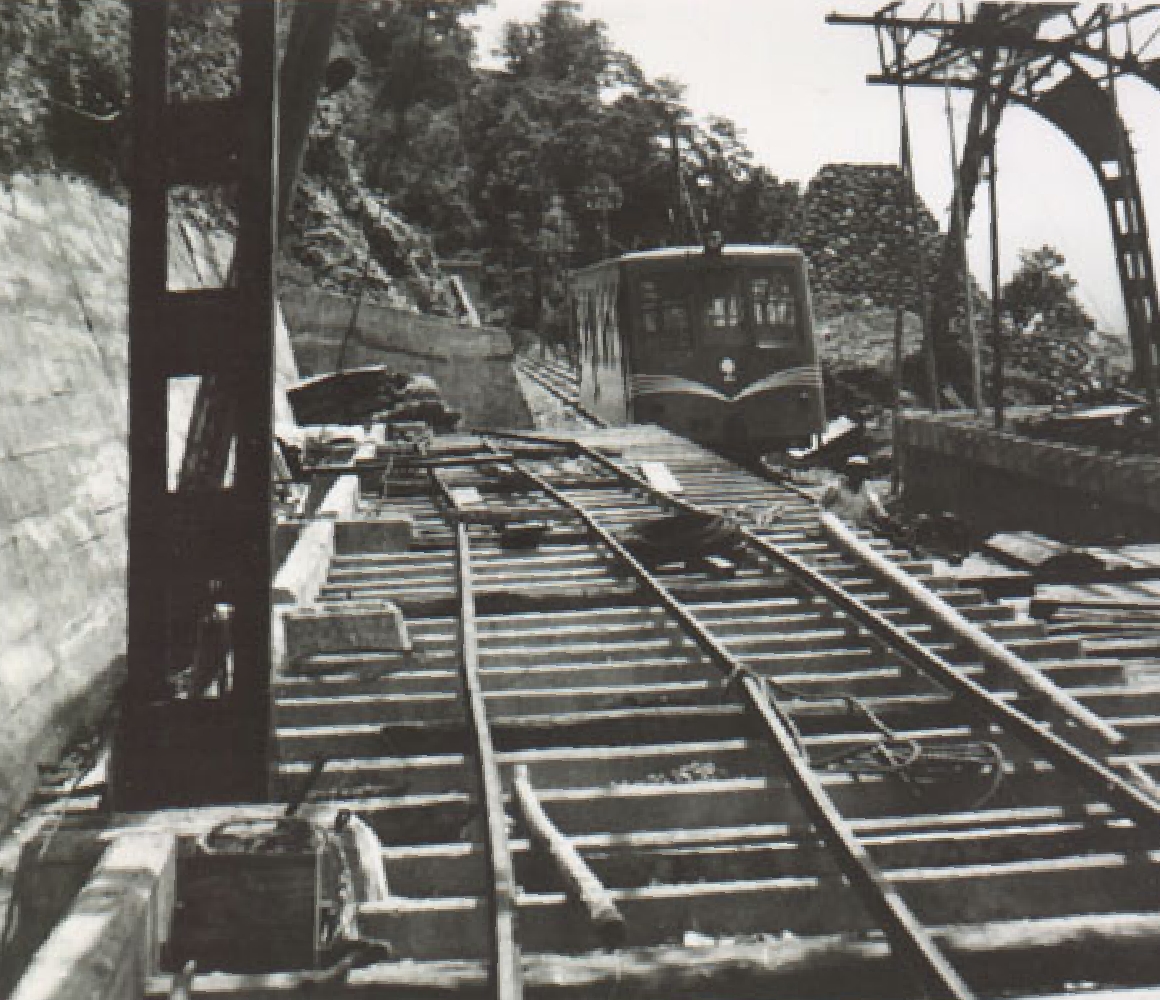
The distance between Tateyama Station and Bijodaira Station is a mere 1.3 kilometers, but a complicated track design with huge curves was necessary, and planning this alone took over a year. The cable car opened in August 1954, after which the Tateyama Station building was completed.
The extension of train lines from the city of Toyama began alongside the Tateyama Cable Car construction, but because the completion of the Magawa Bridge in front of Tateyama Station was delayed, a "Temporary Tateyama Station" was built on the Magawa River's left bank. Then, in 1955, the Magawa Bridge was completed, and the train line from the city of Toyama to Tateyama Station was finally finished.
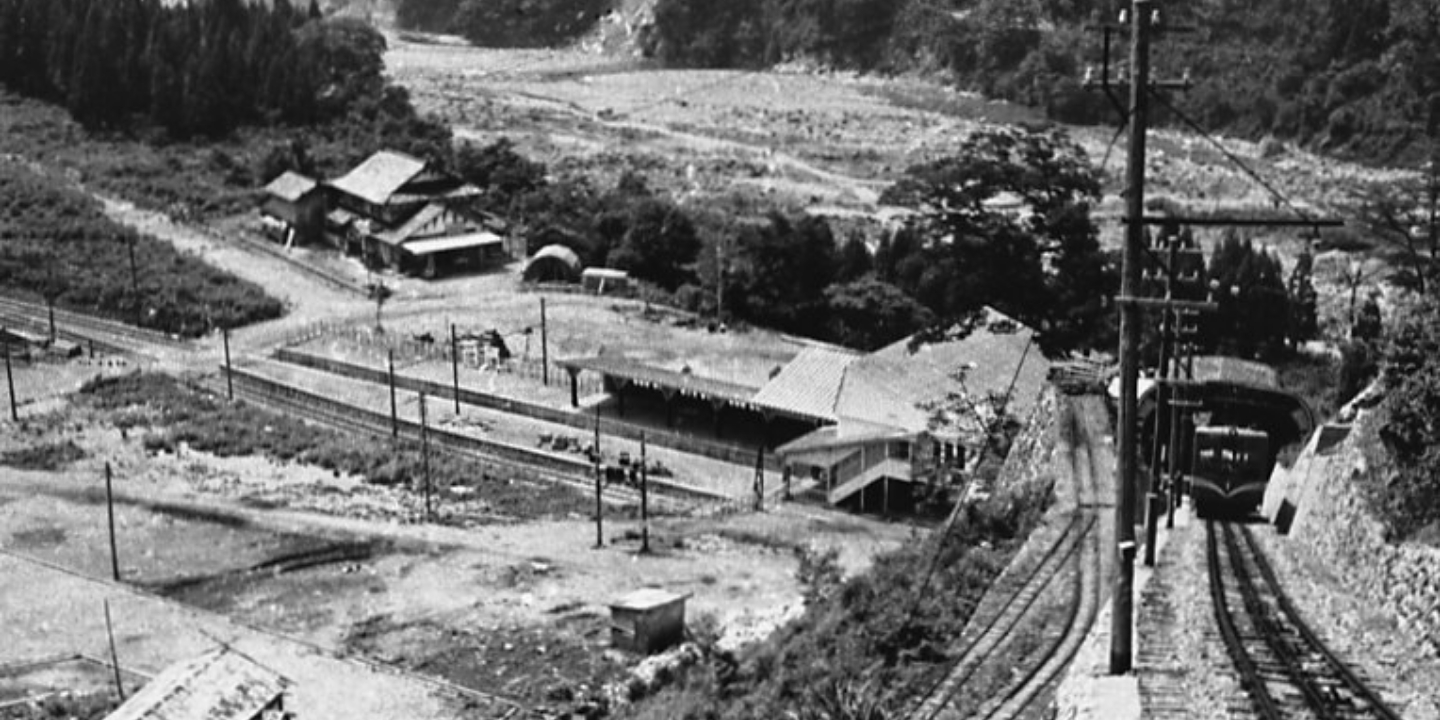
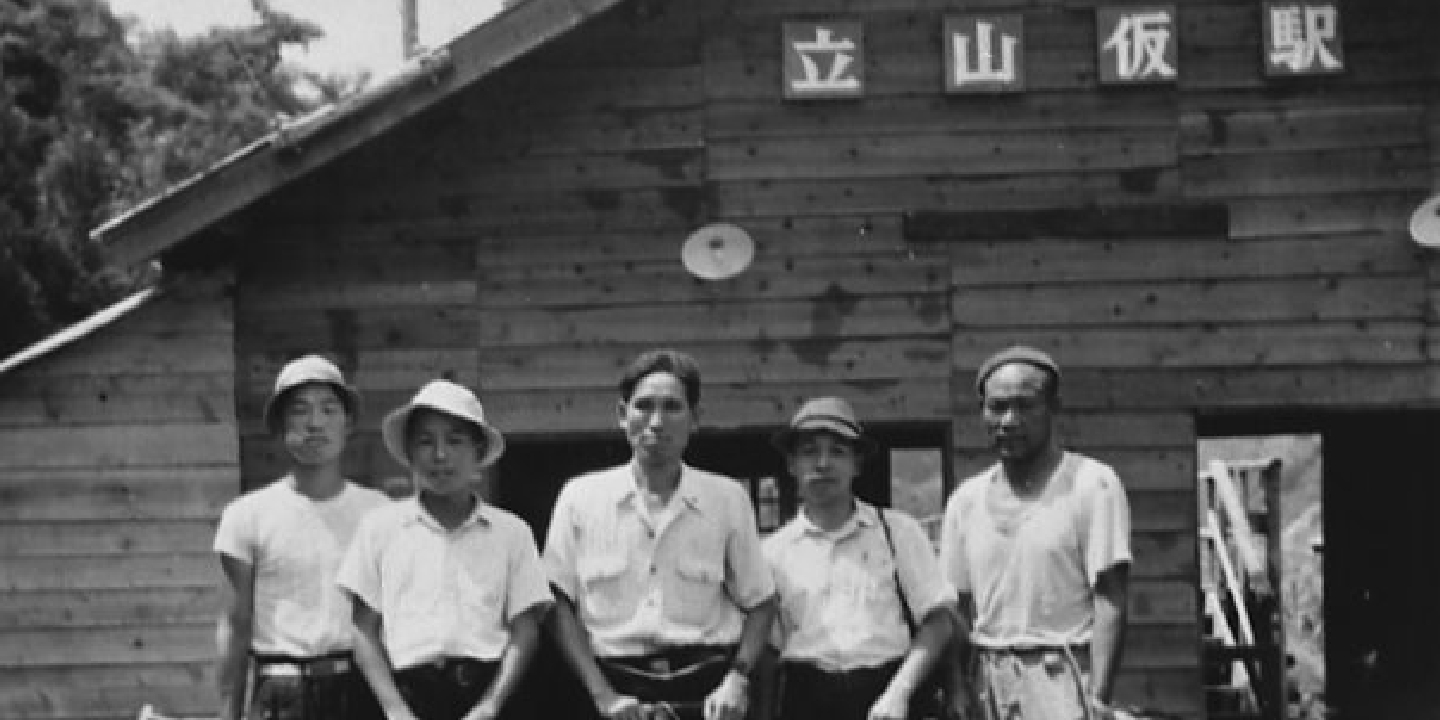
- TATEYAMA CABLE CAR TATEYAMA CABLE CAR
- TATEYAMA CABLE CAR TATEYAMA CABLE CAR
- TATEYAMA CABLE CAR TATEYAMA CABLE CAR

Chapter 2Highland Bus Route Construction
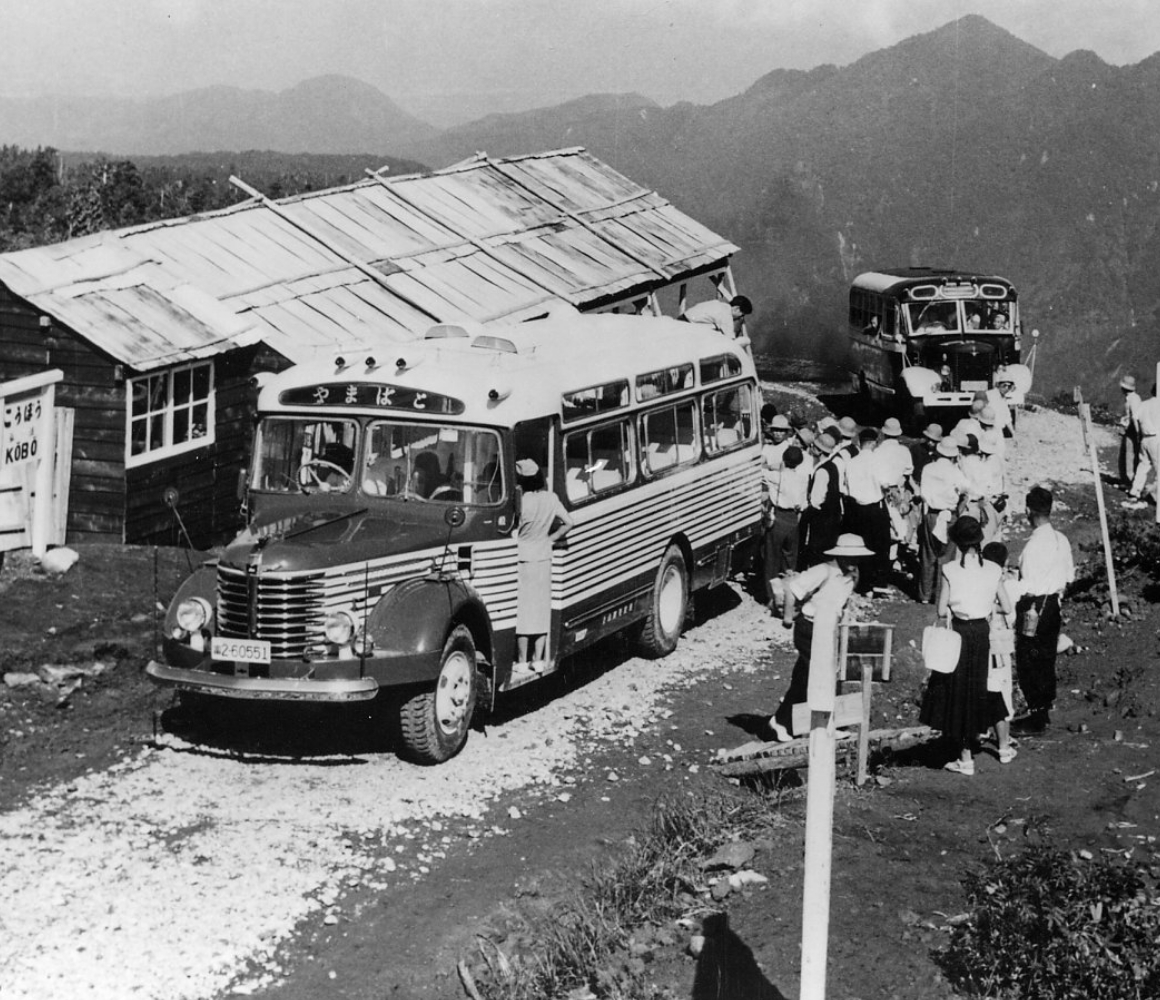
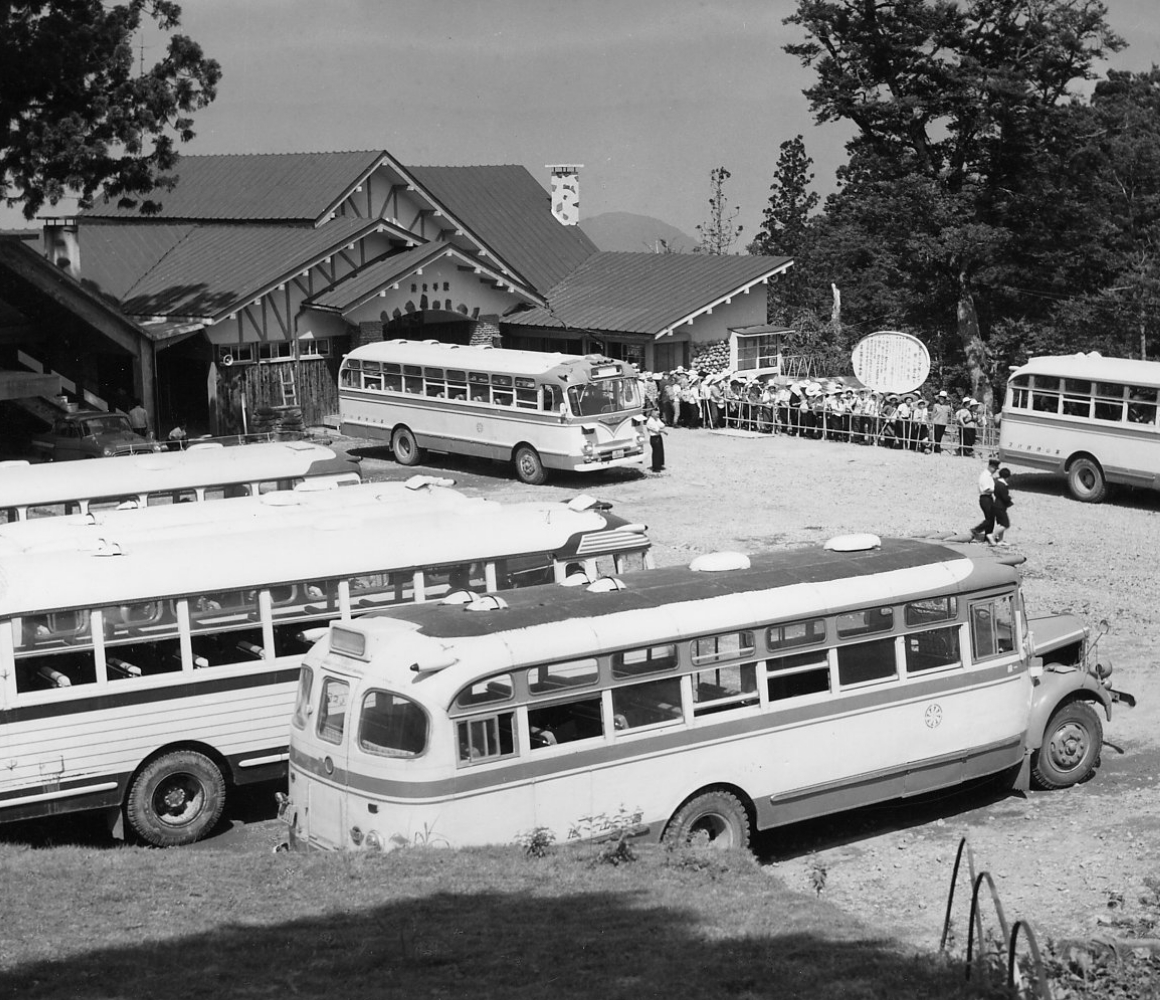
Construction on the Highland Bus route began in 1953, and in 1955 operation began between Bijodaira and Kobo.
At the time, there was no road yet from the foot of the mountain to Bijodaira, so the bus was loaded on a freight car connected to the Tateyama Cable Car and carried up.
The construction on the Highland Bus route proceeded from Kobo to Midagahara, which is still used as an intermediate station, and Tengudaira, finally reaching Murodo in June 1964. With this, bus operations were fully opened along the 23 kilometer route that takes passengers up around 1,500 meters in elevation.
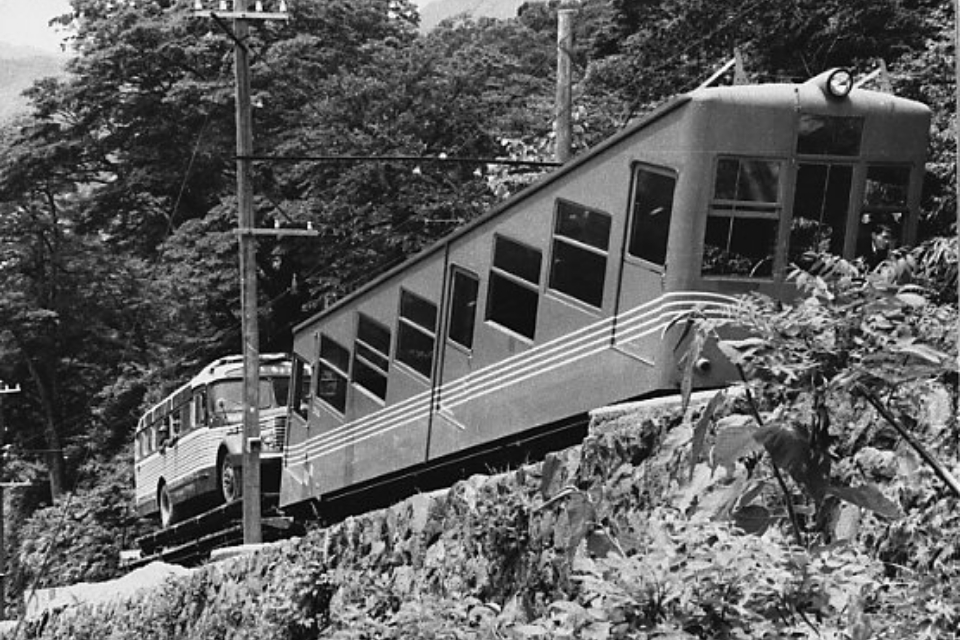
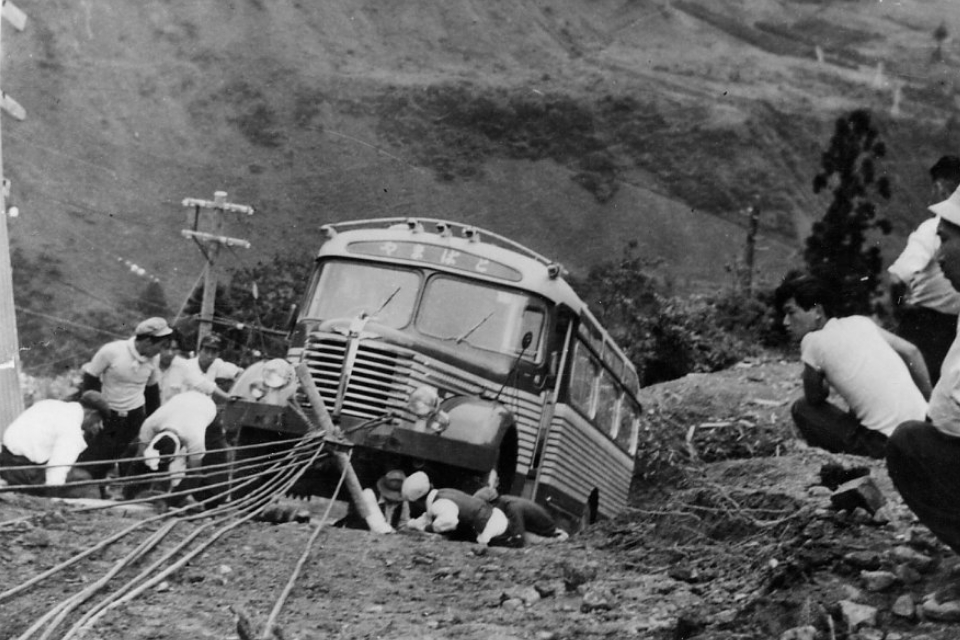
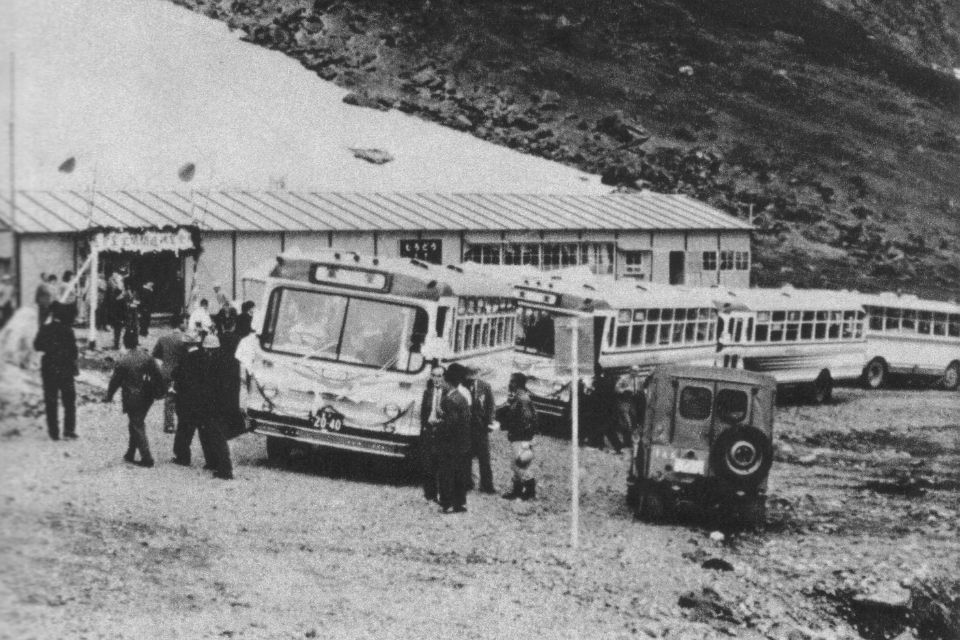
- HIGHLAND BUS HIGHLAND BUS
- HIGHLAND BUS HIGHLAND BUS
- HIGHLAND BUS HIGHLAND BUS


Chapter 3Construction of the Kurobe Cable Car
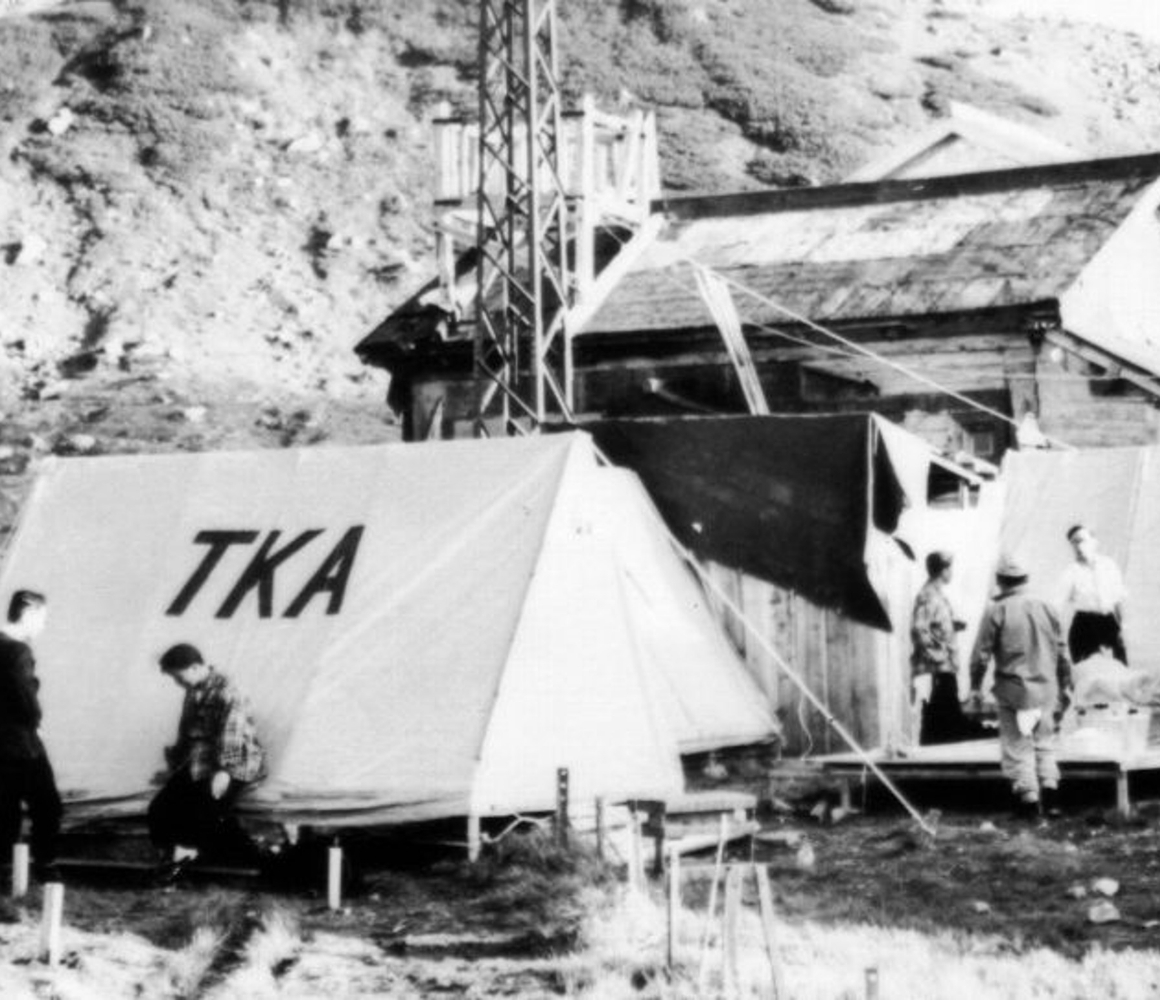
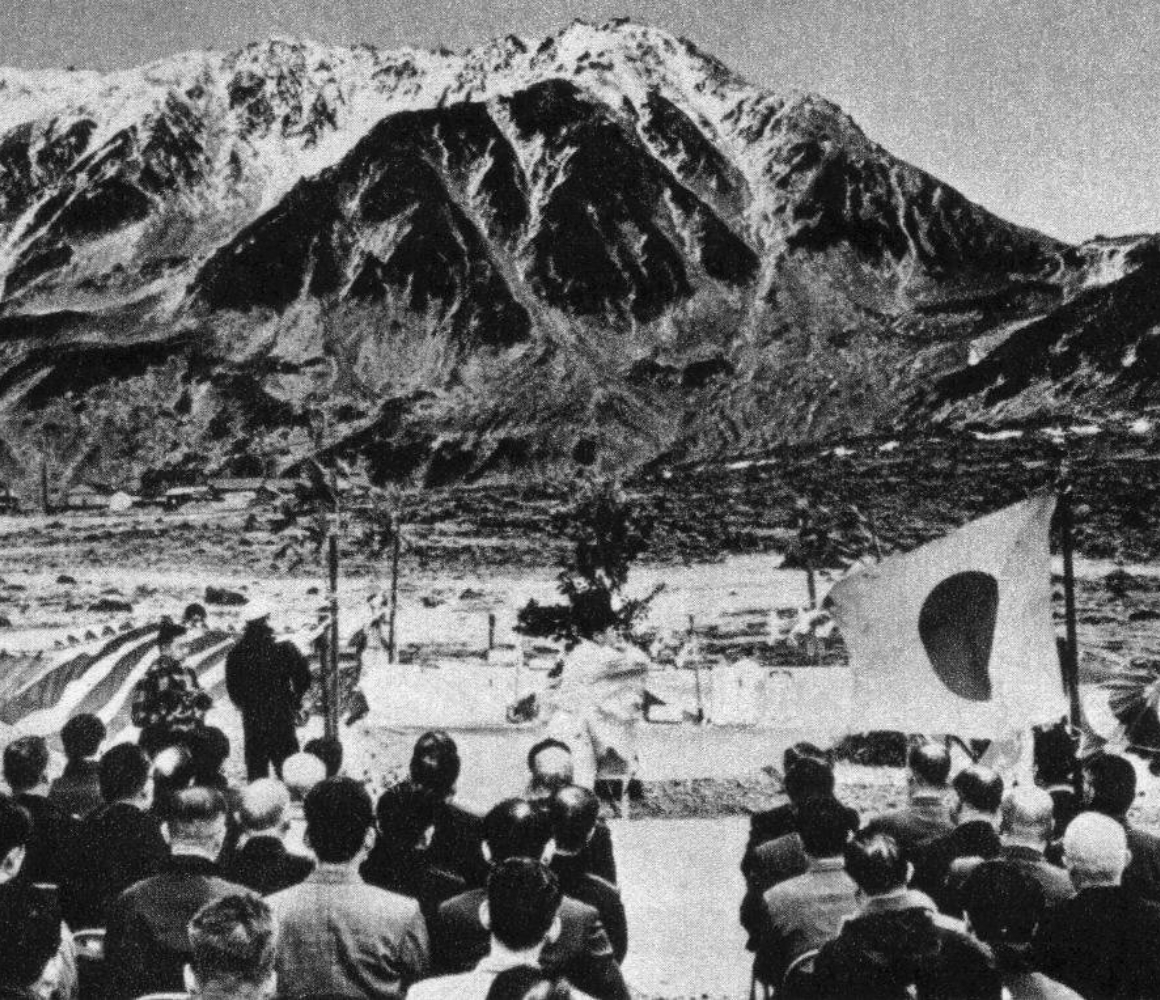
In 1964, the Kansai Electric Power Company's trolley bus began operating between Ogizawa and Lake Kurobe, meaning the last link that needed to be connected was the gap between Murodo and Lake Kurobe. At first, a motorway was planned from Murodo to Lake Kurobe, and over about four years, inspections like weather observations and surveying were carried out. However, a number of problems arose, such as the difficulty of construction in a steep, mountainous area, enormous construction costs, and environmental protection measures, so it was decided in the end to connect the gap with three vehicles: A tunnel bus, ropeway, and cable car.
It was decided to be best from an environmental standpoint as well as for protection from snow damage to make the Kurobe Cable Car completely underground, and excavation work began in March 1966. Necessary materials and equipment were brought to the construction site, located on a sheer cliff, using the ropeway (aerial lift) and large helicopters. Once the Kurobedaira Station building was completed a hoist was installed, and the Kurobe Cable Car's opening ceremony was held in July 1969.
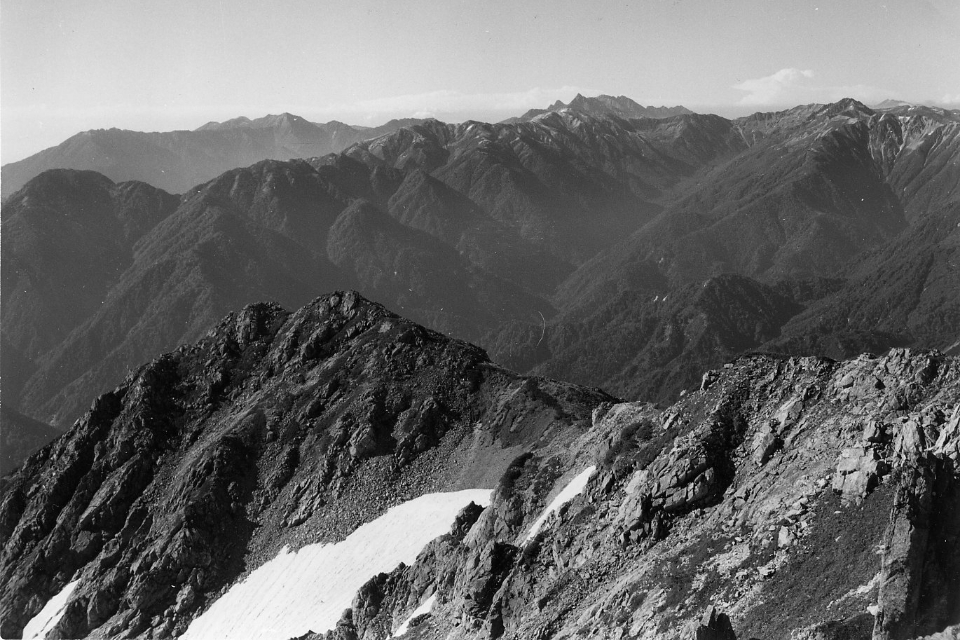
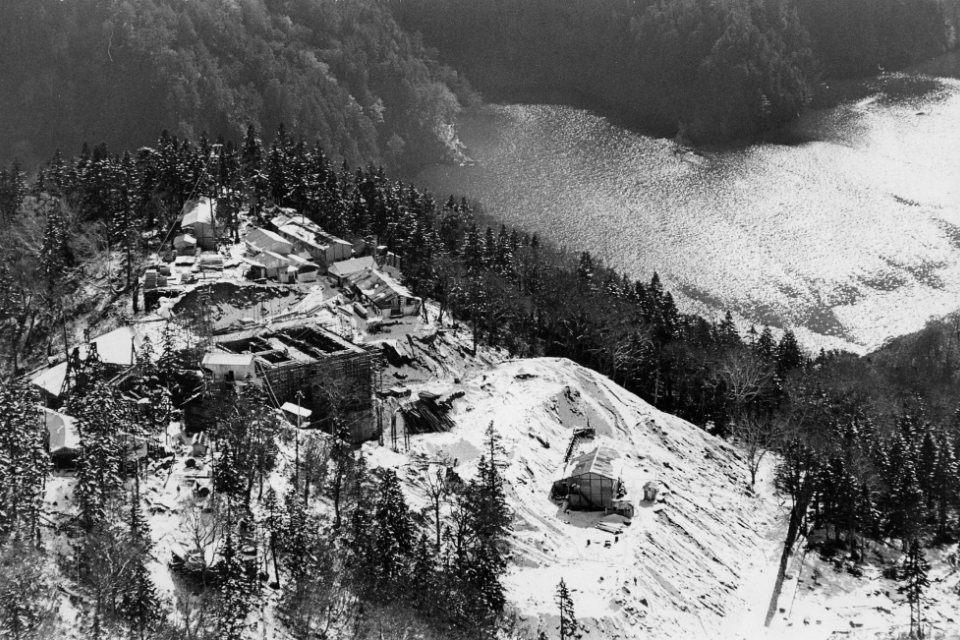
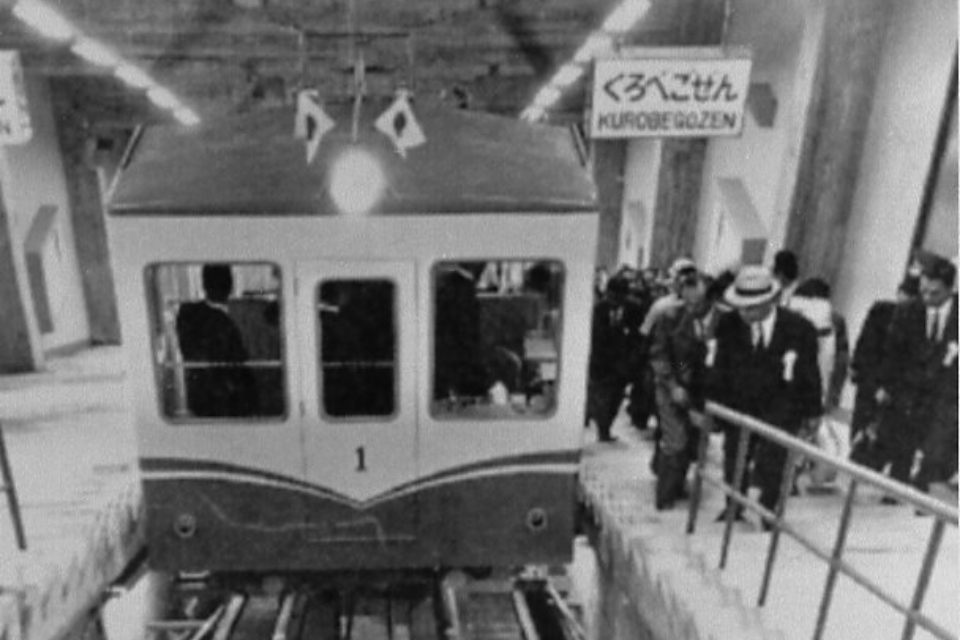
- KUROBE CABLE CAR KUROBE CABLE CAR
- KUROBE CABLE CAR KUROBE CABLE CAR
- KUROBE CABLE CAR KUROBE CABLE CAR

Chapter 4Construction of the Tateyama Ropeway
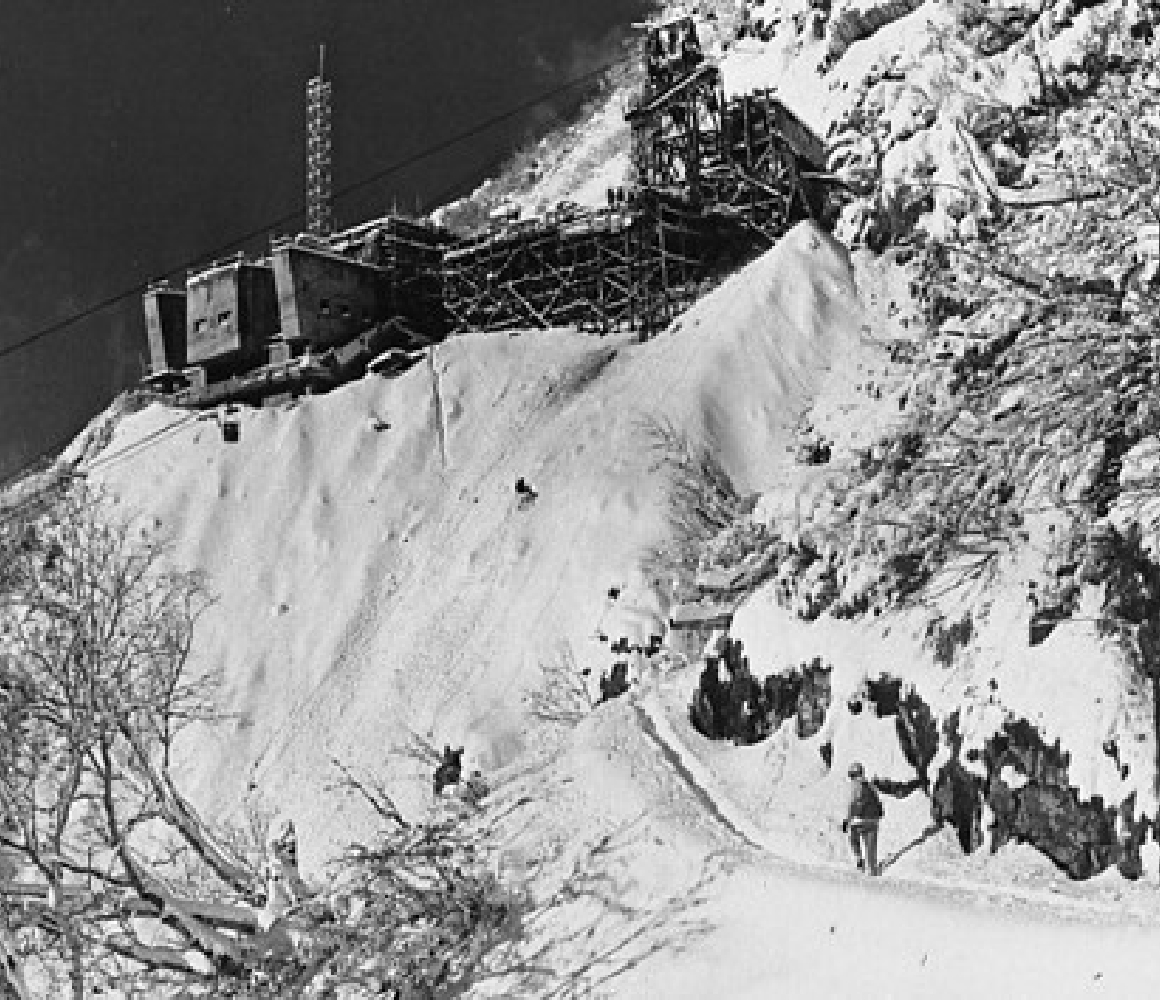
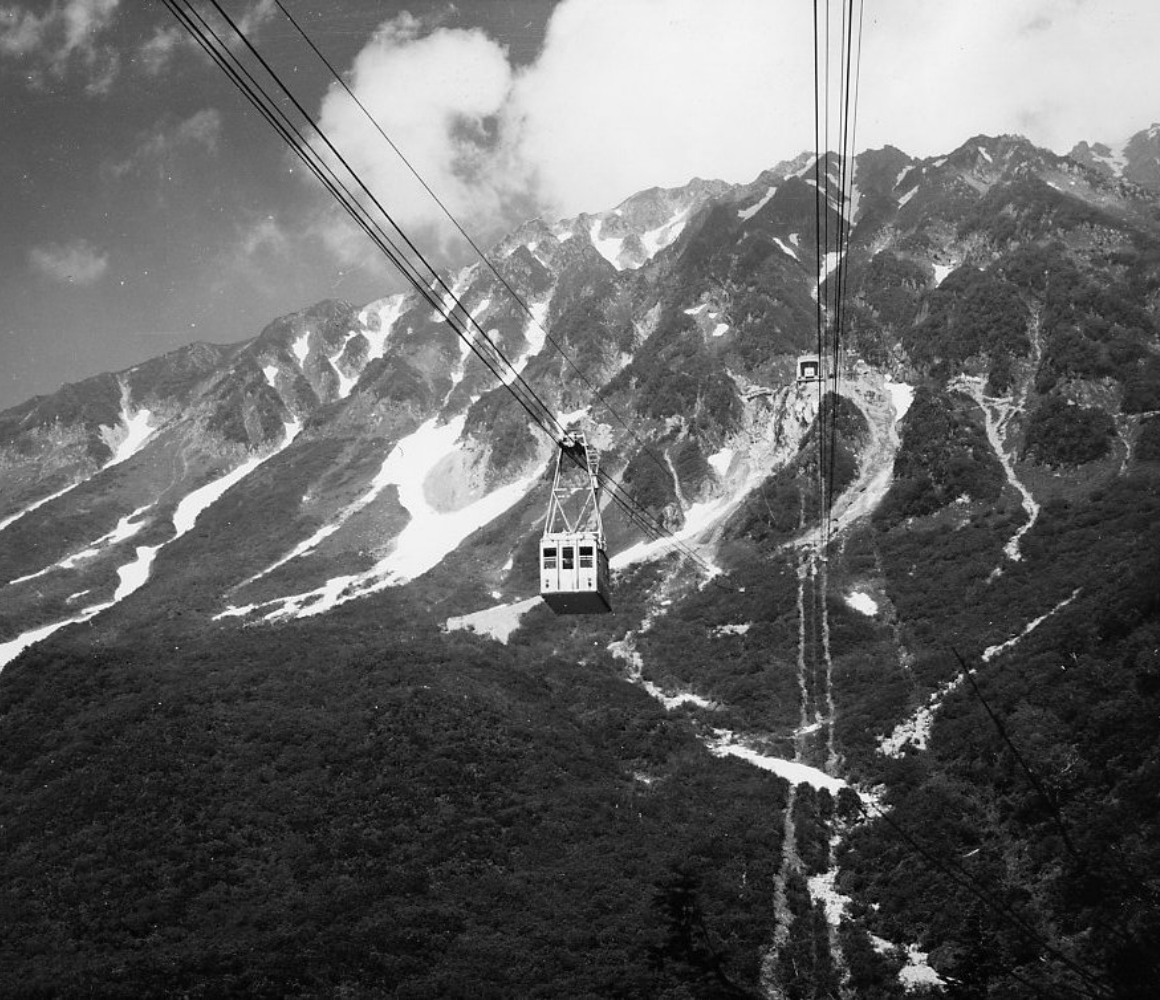
This area is frequently hit by avalanches and falling rocks, so a point 2,136 meters above sea level atop a sheer cliff was chosen as the only safe location, and the Daikanbo Station building was constructed. In order to protect the environment as well as avoid avalanches and falling rocks, the 1,710-meters Tateyama Ropeway was built without any supporting structures along the way, making it the first one-span ropeway in Japan. Its length exceeded the legal limit at the time of construction, but it was given special permission to be built. The high-performance cable that enabled this length, measuring 5.4 centimeters in diameter and weighing 28 tons, was developed specifically for the ropeway's construction. It couldn't be carried by the Tateyama Cable Car, so it was brought up on trailers through the Kanden Tunnel and over the Kurobe Dam. An operation test was performed in December 1969 during a heavy blizzard, and the ropeway began operations in July 1970.
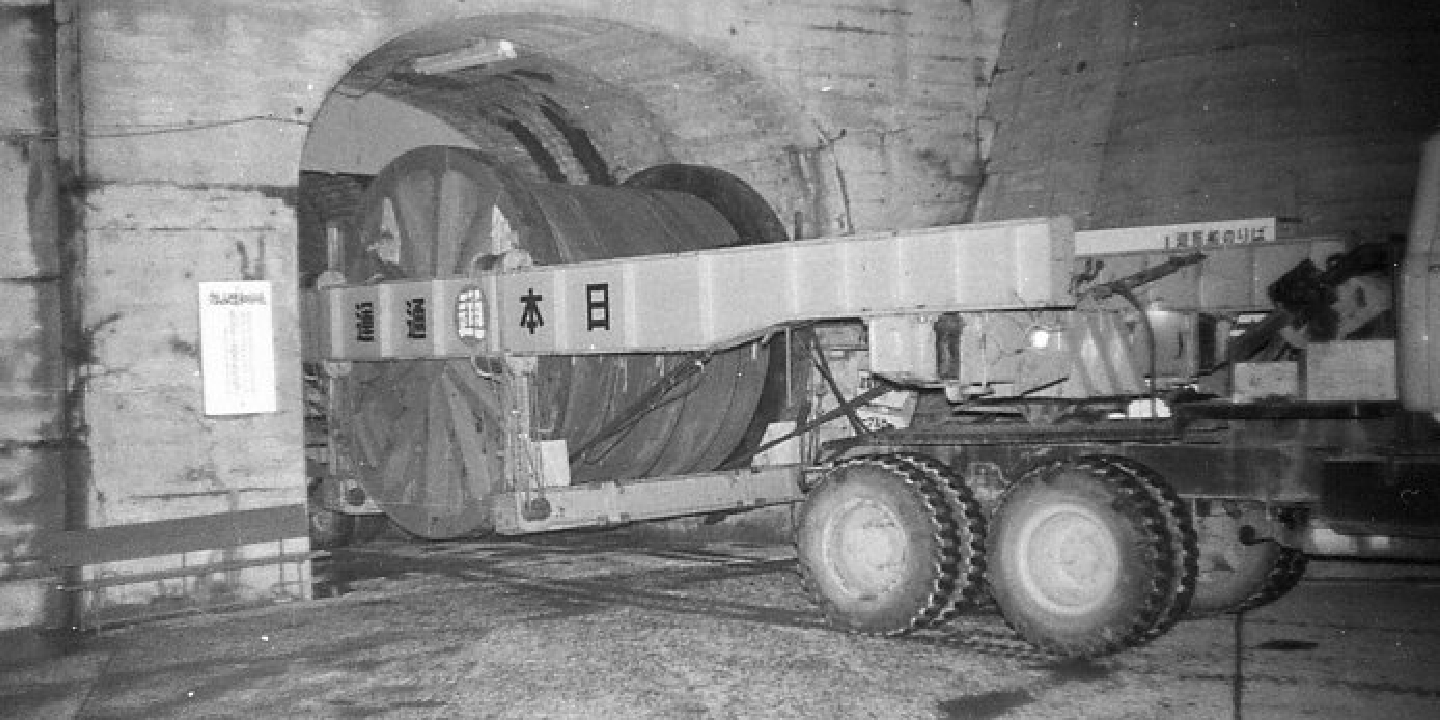
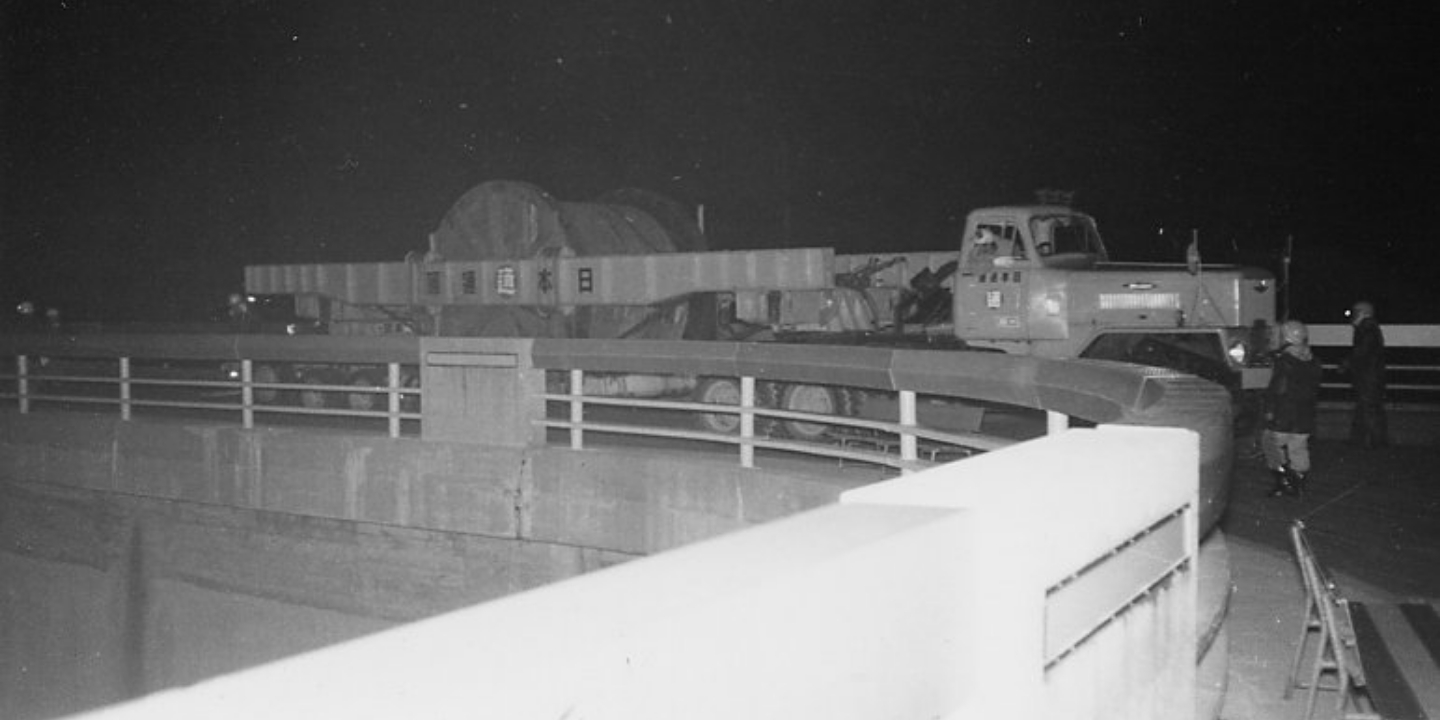
- TATEYAMA ROPEWAY TATEYAMA ROPEWAY
- TATEYAMA ROPEWAY TATEYAMA ROPEWAY
- TATEYAMA ROPEWAY TATEYAMA ROPEWAY

Chapter 5Construction of the Tateyama Tunnel
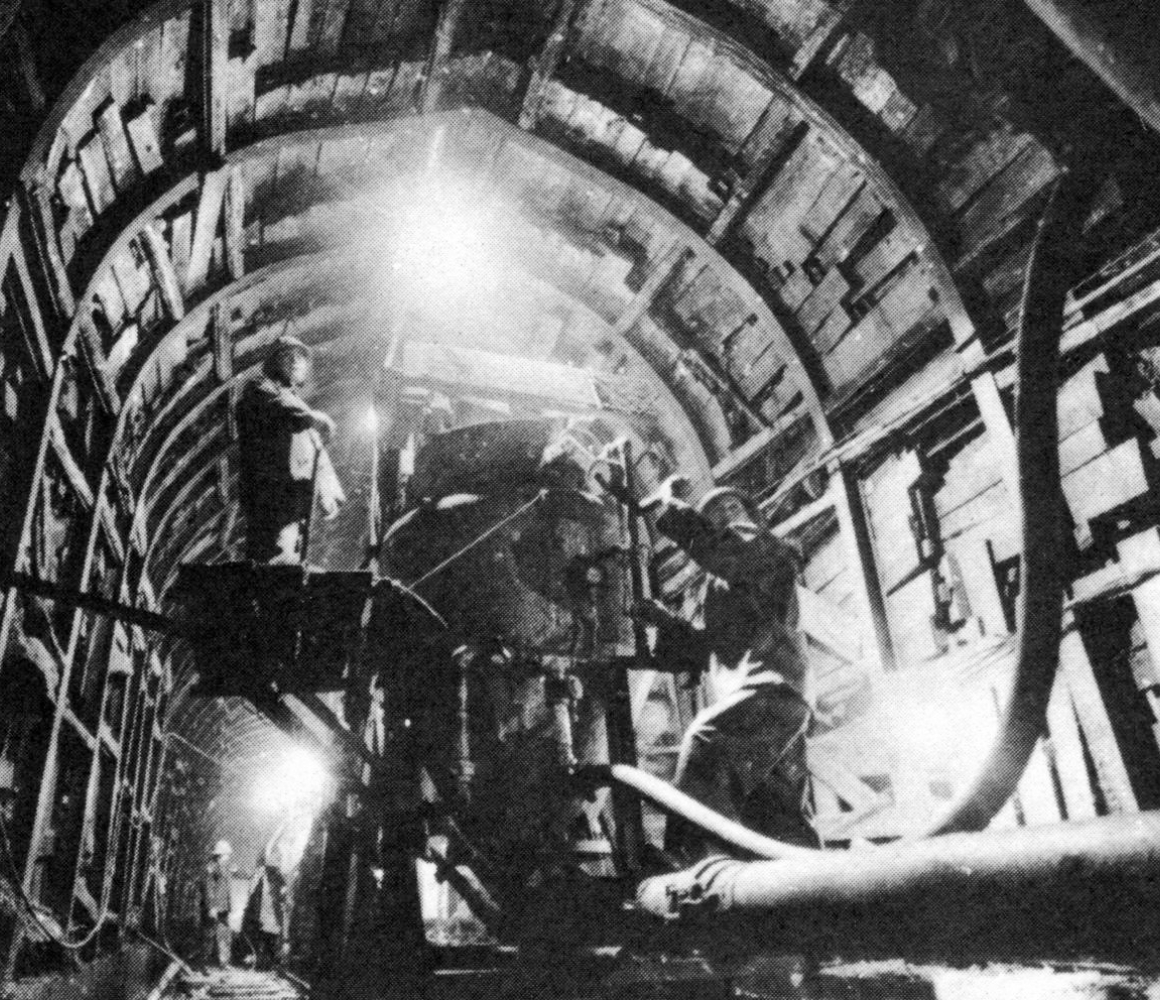
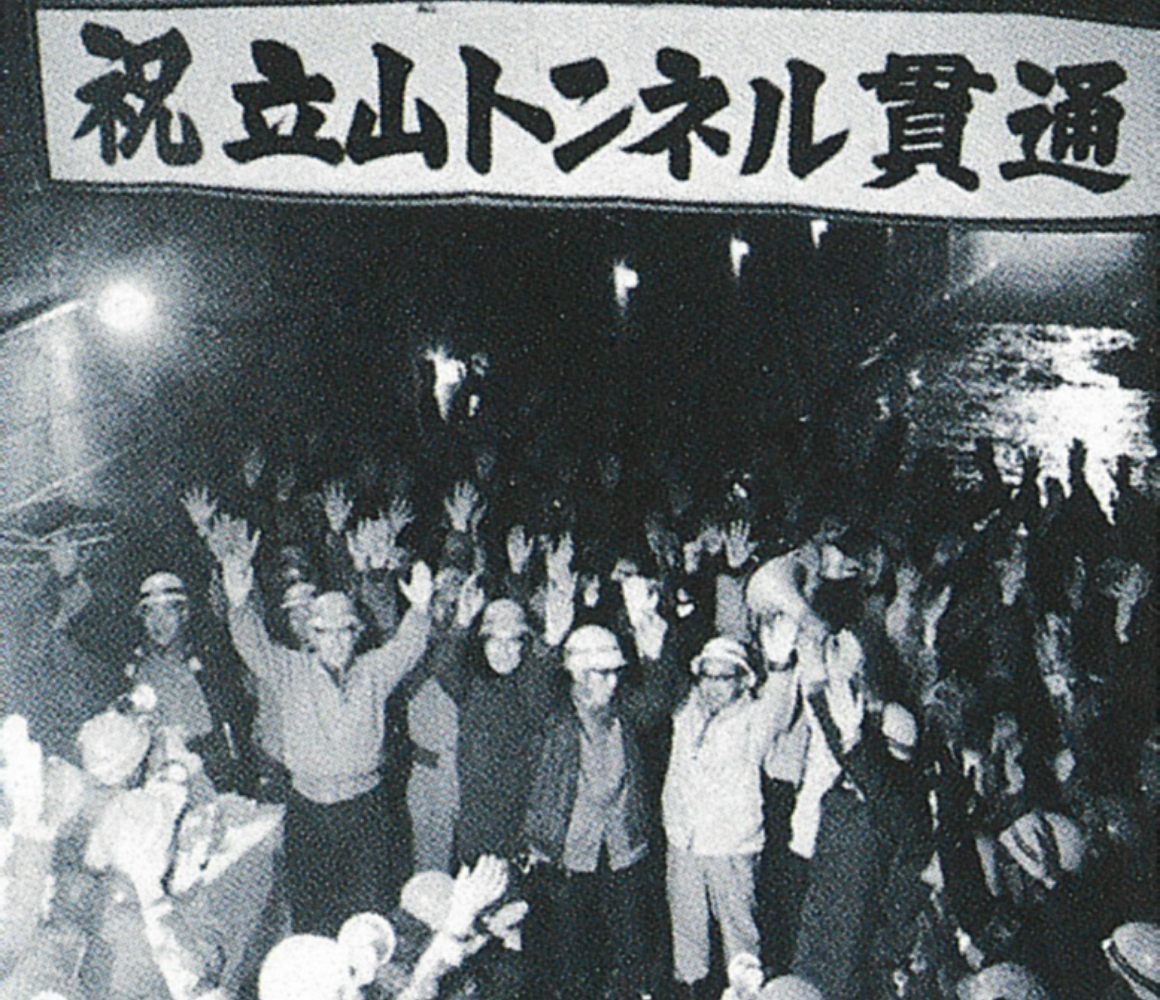
Excavation work for the Tateyama Tunnel, which runs between Murodo and Daikanbo, started in April 1966 from both the Murodo and Kurobe Dam sides, but they ran into multiple crush zones along the way. Crush zones are weak geological strata which carry risks of abnormal spring water discharge or collapse. Construction was stopped a number of times when as much 63 tons per minute of muddy 2.5℃ water flowed through the tunnel, but work continued as they went around the crush zones or hardened them with chemicals. You can get a sense of the difficulties during construction when you actually go through the tunnel. In addition to two large curves, there are also three points where the path very slightly curves. These curves are a result of the team's hard work continuing the construction while strategically avoiding the crush zones they came across multiple times. The 3.7-kilometer Tateyama Tunnel was finally completed in December 1969, and a hearty celebration was held. The Tateyama Tunnel was opened in April 1971, two years after the tunnel was completed.
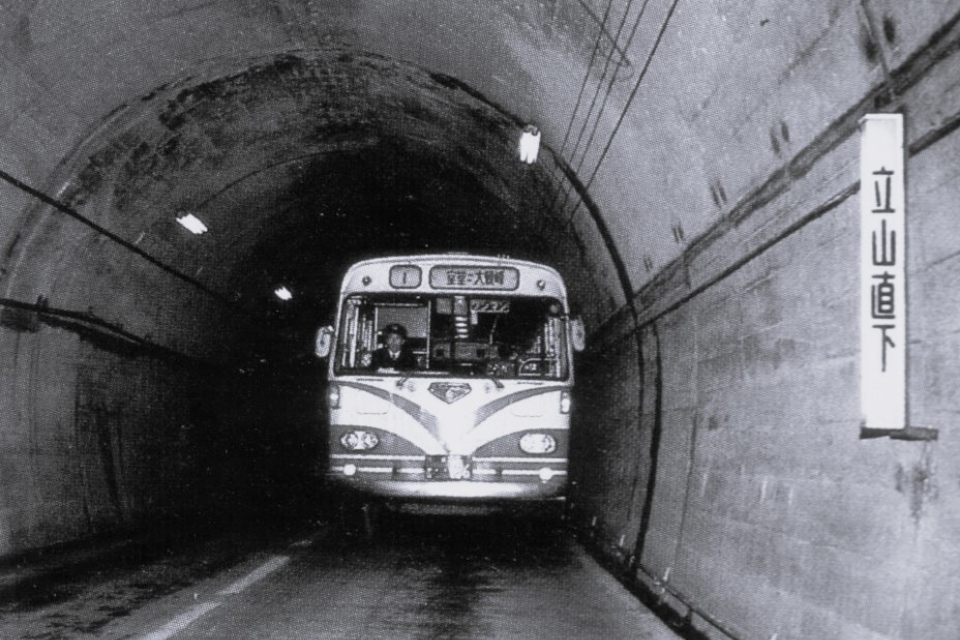
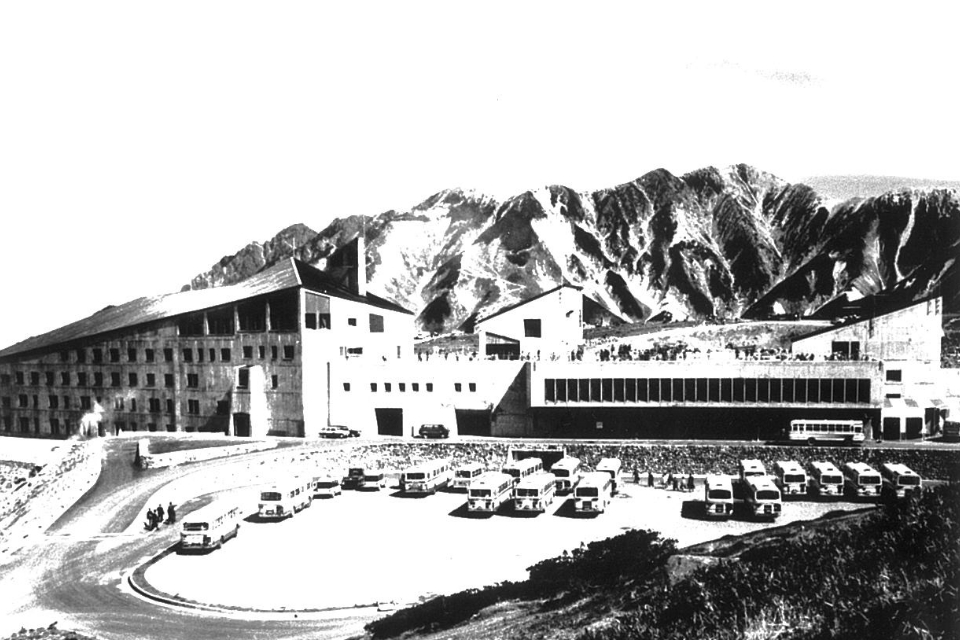
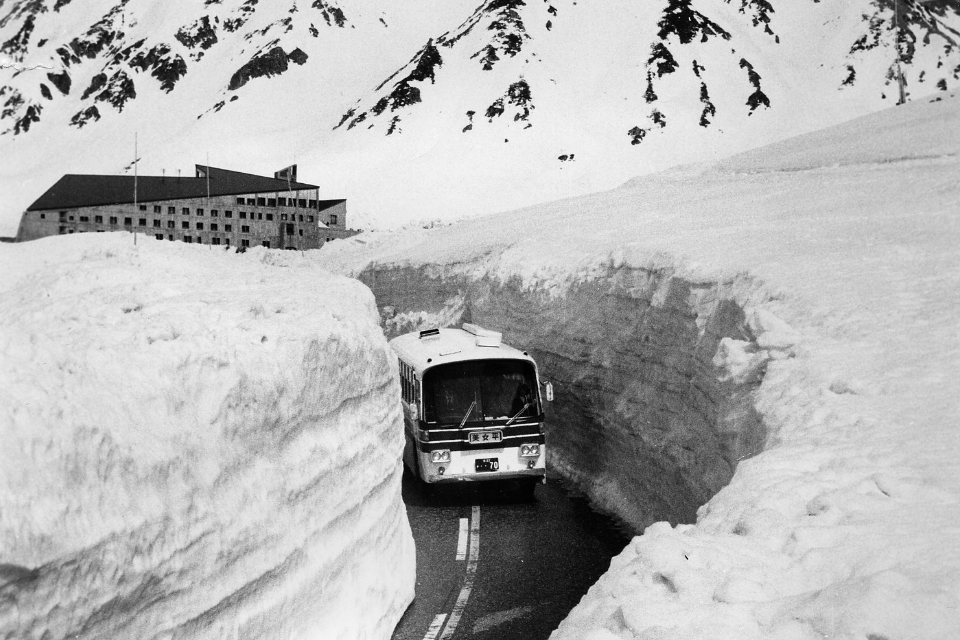
Then, once the snow removal on the Tateyama Highland Bus route finished in June 1971, The Tateyama Kurobe Alpine Route was finally fully opened. Roughly 20 years had passed since construction on the Tateyama Cable Car began in 1952.
In August of the next year, the Murodo Terminal was completed, and the Hotel Tateyama, Japan's highest lodging facility at an elevation of 2,450 meters, was opened the next month. This Murodo Terminal isn't just a station and hotel, it's also a public rescue and evacuation center that protects those traveling along the Tateyama Kurobe Alpine Route and mountain climbers.
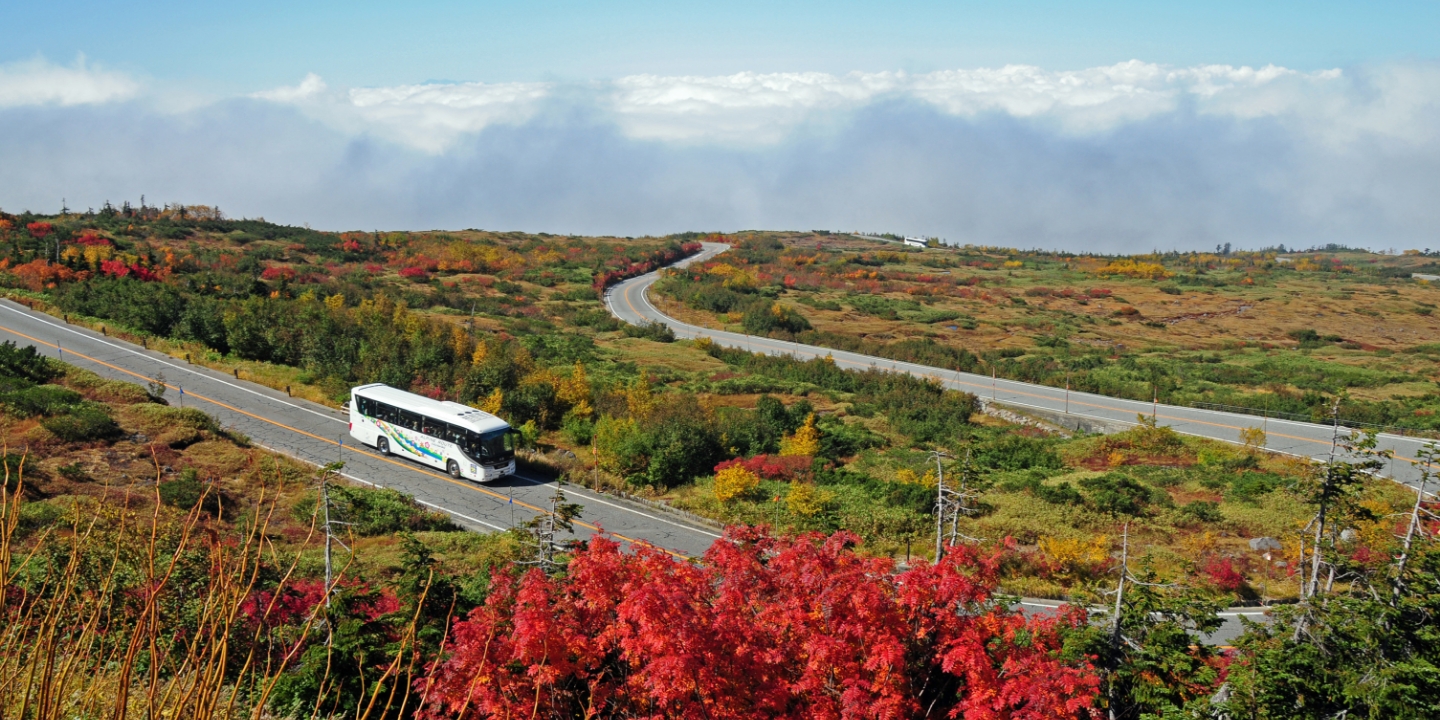
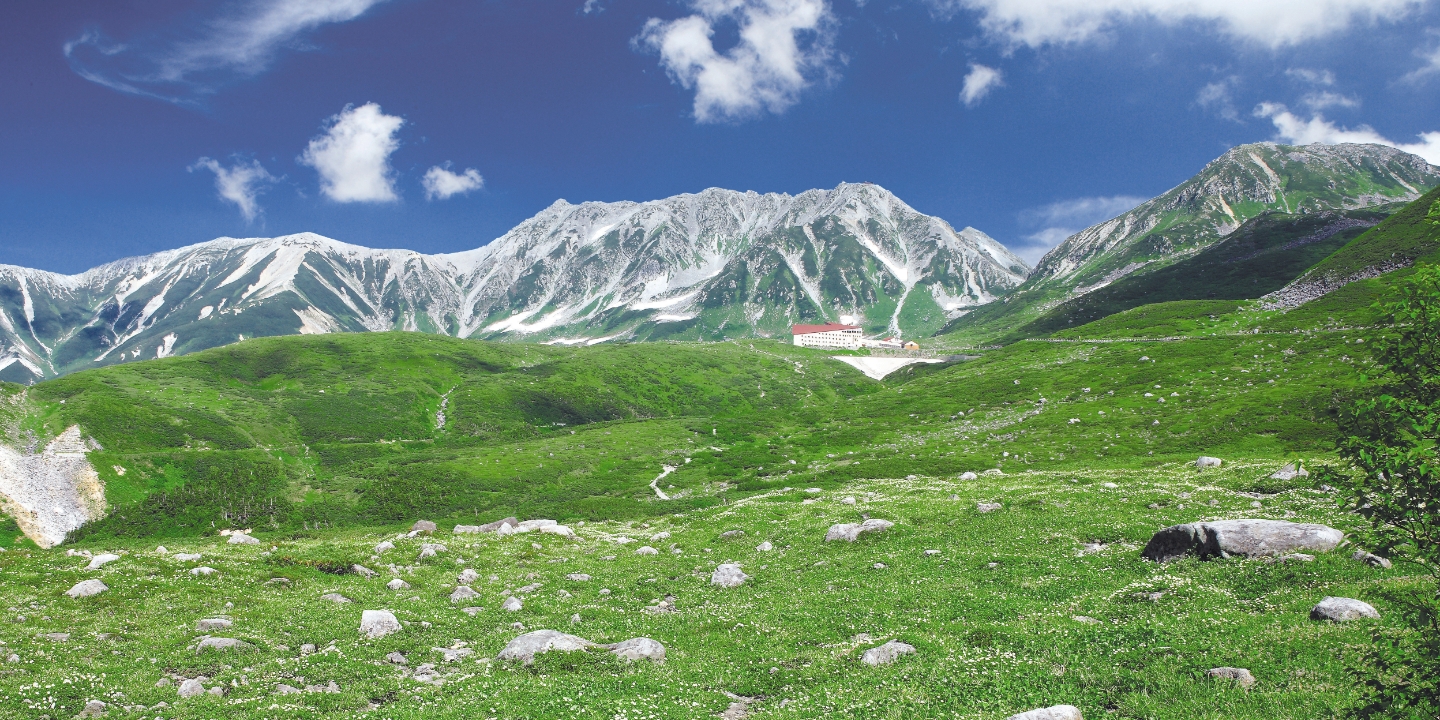
- TATEYAMA TUNNEL TATEYAMA TUNNEL
- TATEYAMA TUNNEL TATEYAMA TUNNEL
- TATEYAMA TUNNEL TATEYAMA TUNNEL
